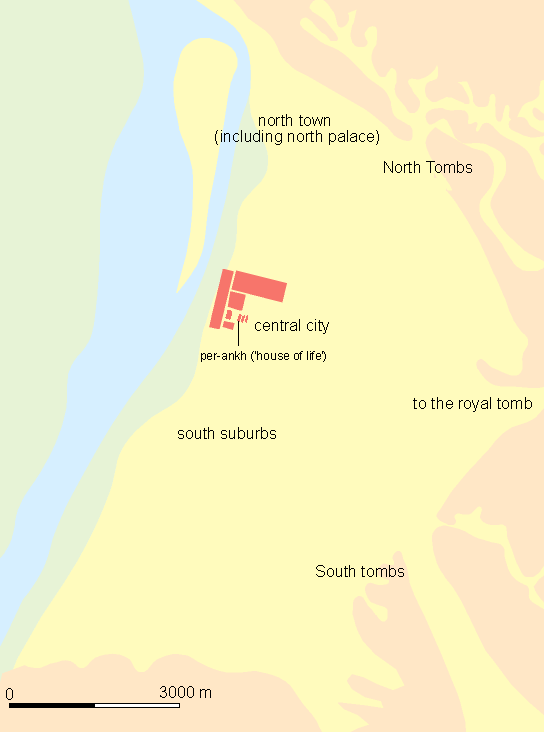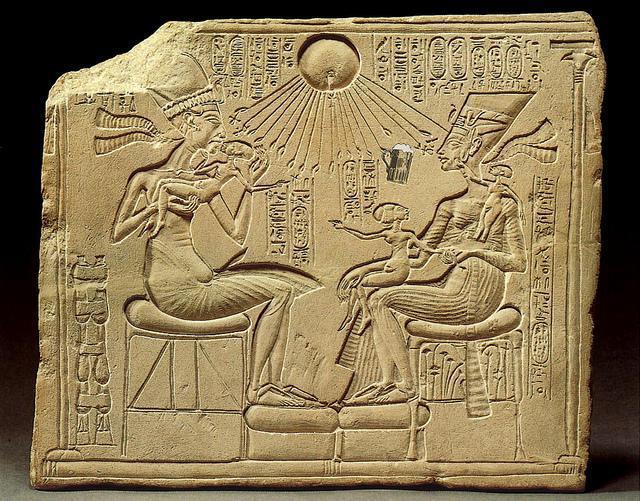Exploring the Tombs of Tell El Amarna: Akhetaton's Hidden Treasures
Tell El Amarna, also known as Amarna or Akhetaten, is an archaeological site in Egypt that holds great historical and cultural significance. Situated on the eastern bank of the Nile River, Tell El Amarna served as the capital city during the reign of the pharaoh Akhenaten in the 14th century BC. This unique and intriguing site offers a window into the religious, artistic, and political developments of ancient Egypt. Let's embark on a journey to uncover the secrets of Tell El Amarna.
A Visionary Pharaoh
Tell El Amarna was established by Pharaoh Akhenaten, who reigned during the period known as the Amarna Period. Akhenaten, driven by religious and artistic reform, relocated the capital from Thebes to Tell El Amarna, a previously uninhabited site. The city was dedicated to the worship of the sun god Aten and served as a symbol of Akhenaten's revolutionary religious beliefs.
The Amarna Artistic Style
One of the remarkable aspects of Tell El Amarna is its distinctive artistic style. During the Amarna Period, a new form of art emerged, characterized by naturalistic and expressive representations. This departure from traditional Egyptian artistic conventions is evident in the depiction of Akhenaten and his family, with elongated bodies, exaggerated features, and an emphasis on naturalistic poses and gestures.
The Great Royal Palace
At the heart of Tell El Amarna lies the Great Royal Palace, the residence of Pharaoh Akhenaten and his royal family. The palace complex was vast, featuring numerous courtyards, audience halls, and private chambers. Excavations have revealed traces of colorful wall paintings and intricate carvings that once adorned the palace walls, providing insights into the royal lifestyle and artistic tastes of the time.

The House of the High Priest
Adjacent to the Great Royal Palace is the House of the High Priest, a prominent structure in Tell El Amarna. This building served as the residence and administrative center for the high priest, who played a crucial role in the religious and political affairs of the city. The House of the High Priest offers valuable insights into the religious practices and rituals of the Amarna Period.
The Royal Tomb
The Northern Tombs, located on the outskirts of Tell El Amarna, are a collection of rock-cut tombs constructed for the burial of the royal family and high-ranking officials. These tombs showcase intricate carvings and paintings depicting scenes from daily life, religious rituals, and the journey to the afterlife. Exploring these tombs provides a glimpse into the religious beliefs and funerary traditions of ancient Egypt.
A City of Letters
Tell El Amarna is renowned for the discovery of the Amarna Letters, a collection of diplomatic correspondence exchanged between Akhenaten's court and various foreign rulers. These letters provide valuable insights into the political landscape, international relations, and cultural exchanges of the time. The Amarna Letters offer a unique perspective on ancient Egyptian diplomacy and the interconnectedness of civilizations.
Preserving Tell El Amarna
Preservation efforts are crucial in safeguarding the archaeological treasures of Tell El Amarna. Ongoing excavations, restoration projects, and conservation measures ensure that the site remains accessible to scholars, researchers, and visitors. These efforts contribute to our understanding of ancient Egypt and help preserve this significant cultural heritage for future generations.
Visiting Tell El Amarna
Today, visitors have the opportunity to explore the captivating ruins of Tell El Amarna. The site offers a remarkable experience, allowing visitors to immerse themselves in the history and culture of ancient Egypt. As you stroll through the ruins of this once-thriving city, you can imagine the bustling streets, grand palaces, and religious ceremonies that took place here thousands of years ago.
The visitor center at Tell El Amarna provides valuable information and exhibits that offer context to the site's significance. Knowledgeable guides are available to lead you through the various structures, explaining their historical and architectural importance.
One of the must-visit areas is the Great Royal Palace, where you can explore the remnants of the opulent residence of Pharaoh Akhenaten and his family. Admire the intricate carvings on the walls and imagine the grandeur of the royal court as you walk through the courtyards and halls.
Adjacent to the palace is the House of the High Priest, offering insights into the religious practices and rituals of the time. Marvel at the ornate decorations and get a sense of the important role played by the high priest in the city's affairs.
A visit to the Northern Tombs is also highly recommended. These rock-cut tombs provide a glimpse into the funerary practices and beliefs of ancient Egypt. Explore the intricate paintings and carvings that depict scenes from daily life and the journey to the afterlife.
As you wander through the ruins of Tell El Amarna, take in the unique artistic style of the Amarna Period. Notice the naturalistic representations and expressive features that set this era apart from traditional Egyptian art. The art of Tell El Amarna reflects the religious and cultural revolution brought about by Pharaoh Akhenaten.
To fully appreciate the historical significance of Tell El Amarna, don't miss the opportunity to see the Amarna Letters. These ancient diplomatic correspondences shed light on the political landscape of the time and provide a glimpse into the interactions between Egypt and other civilizations.
Preserving the site of Tell El Amarna is of utmost importance. Ongoing efforts ensure that the structures are protected from natural decay and human interference. By supporting these conservation initiatives, visitors can contribute to the long-term preservation of this ancient city and its invaluable artifacts.
Tell El Amarna is a captivating archaeological site that offers a unique glimpse into the world of ancient Egypt. Through its magnificent structures, artistic treasures, and historical artifacts, the site tells the story of Pharaoh Akhenaten's vision and the cultural revolution that unfolded during the Amarna Period. Visiting Tell El Amarna is a journey back in time, where you can witness the grandeur of the royal court, explore the religious practices of the era, and appreciate the artistic achievements of ancient Egypt.
Egypt Tours Including Tell El Amarna
| Tour | Itinerary | Price |
|---|---|---|
| Cairo City Breaks | 3 Days | $ 255 |
| Cairo Private Tours | 4 Days | $ 429 |
| Luxor and Aswan Travels | 4 Days | $ 665 |
| Cairo Holiday Packages | 5 Days | $ 819 |
| Nile Cruise Cairo to Luxor | 13 Days | $ 6337 |
| Nile Cruise Cairo to Aswan | 15 Days | $ 7950 |
